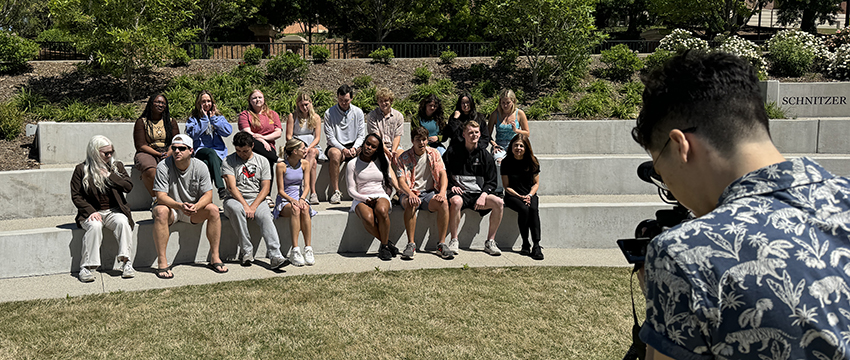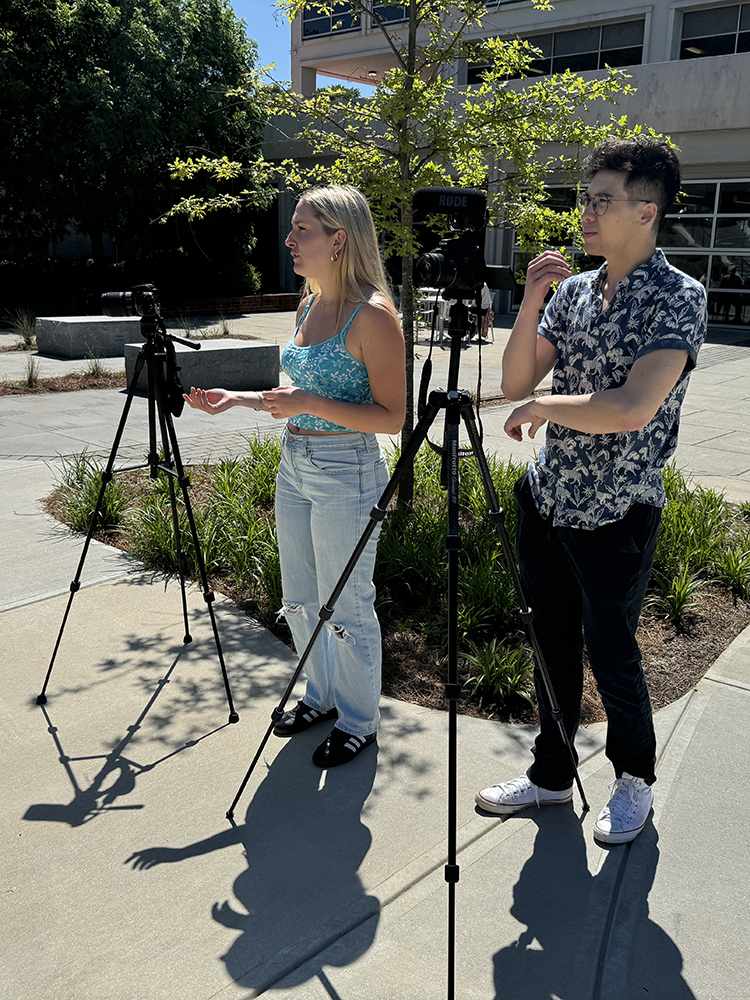Class produces documentary about water issues in Northeast Georgia

Class produces documentary about water issues in Northeast Georgia
Students in Ralitsa Vassileva’s Reporting IV capstone course spent the semester reporting on issues related to sustainability. Individually, their written features covered wide-spread topics like recycling oyster shells, the need for a pain-based weather forecast and composting as a way to reduce climate change, among others. But collectively, they took their assignment one step further by producing a documentary focused on water usage and using skills to incorporate solutions journalism—or solutions to problems—into their work.
The finished project, “Watermark: How Georgians are Making a Difference one Drop at a Time,” is available on YouTube, the Grady Newsource website, and will be submitted to the Solutions Journalism Network for their consideration.
“If we don’t cover solutions, we present an unbalanced view, where nothing is going right,” said Vassileva, a journalism lecturer and instructor for the class. “So, it’s important to introduce students to a solutions approach. Above all, I hope students leave this class with a more hopeful view of their world.”
The class divided into five groups focusing on different areas of water issues for the documentary including:
• Atlanta Watershed Learning Network’s commitment to educating Atlanta’s marginalized communities to advocate for clean water and equitable development.
• The UGA Smart Irrigation app developed by UGA Extension and used by local farmers to determine how much to water their crops and the best time to water.
• The Rivers Alive project in Milledgeville working to keep trash out of local waterways,
• Efforts by Creature Comforts to use sustainability in producing their beer and their commitment to B-corp certification.
• Promoting programs to encourage responsibly discarding pet waste so it doesn’t pollute waterways .
Most of the students had little video production training before this class, but they learned how to conceptualize a topic, film stories and structure video elements into a narrative.

Three students served as co-producers: Harper Lawson served as a digital producer, while Sam Chin and Jayden Henson served as show producers of the documentary.
“It’s easy to find issues, but finding solutions was tough,” Henson said. “Saying why it’s important is not nearly enough. By adding solutions, I think at least a few people could be inspired to make some sort of change or support a cause that’s making a change.”
The students also appreciated the solutions journalism focus because it provided exposure for nonprofits and provided them a platform to talk about resources like funds and volunteers that they need.
For Sam Chin, a third-year journalism student from nearby Oconee County, working on this project was personally motivating for him. Chin’s grandfather founded and worked for years in UGA’s Marine Extension Service, committed to doing research in the waters off Georgia’s coast.
“The ocean has been a big part of my life and I cherish the time on the water,” Chin said, talking especially about his time at the beach. “For all the work my family has put into the waters, it means a lot to cover the subject because it’s something all of us love and appreciate.”
The students in the JOUR 5091 course also appreciated learning new skills and additional ways to tell stories. Students were inspired by several guest lecturers throughout the semester who talked about how they are creating documentaries and reporting on stories. Whether it is focusing on incorporating solutions into their reporting, or training reporters to do all their own filming, standups and reporting, the students are learning the most current methods used by professionals.
“It’s up to us to translate these stories in an easy and understandable manner,” Chin said of the documentary. “I want a humanize it. I want the audience to see that we’re learning right alongside with them, because we want to do this for the better.”
As the documentary is aired, the main goal is to inspire residents in the community to consider their actions and how they can help be a solution to the problems.
“I hope it reaches larger community in Athens and Northeast Georgia,” Lawson concluded. “This impacts the people who are residents here more than us college students.”
View “Watermark: How Georgians are Making a Difference one Drop at a Time” above.
Author: Sarah Freeman, FreemanS@uga.edu